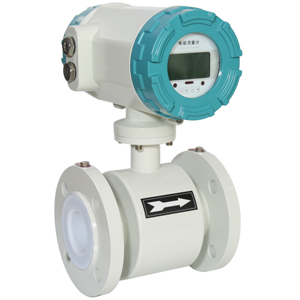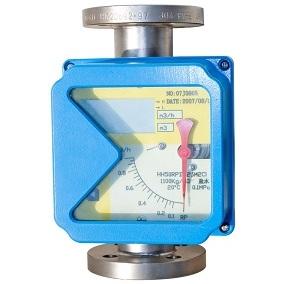There are several types of flowmeters available in the market, each operating on different technologies. While choosing a flow instruments it is, therefore, necessary to be informed about the pros and cons of each type.
Firms nowadays are required to be active in corporate responsibility and environment sustainability and careful about controlling their greenhouse gas (GHG) emission rates. They must be compliant with the regulations while focusing on their assets, human resources, and the environmental impact. Additionally, transfer of custody is another key factor that demands better fiscal monitoring of high-cost products and services is the rise in the price of energy.
Common Flow measurement Applications
Nowadays, in the factories and industries, people are required to make fast and quality decisions based on the data that is captured and analyzed. Most plants rely on the correct measurement of their flow processes for this to happen. There are two common challenges of flow measurement- cost and accuracy. For best results, the right flowmeter is used for the correct application so that performance effectiveness is achieved at optimum cost to the company.
Popular flow Measurement instrumentation
While flowmeters are the best tools to control, monitor and measure the process fluid flow, firms must be careful about which technology they choose.
Coriolis flow meter
Coriolis flowmeters use the principle of shift in phase, frequency or amplitude of fluids passing through a vibrating tube. The integrally installed pc board receives the input signal and the output signal is proportional to the rate of mass flow rate of the fluid. This is unlike thermal mass flowmeters where the output depends on the fluid's physical properties.
These mass flow meter sensors can accurately measure the mass of fluid for a high-temperature range. They can be used for non-conducting, viscous fluids because of the open design that allows unobstructed flow. These mass flow meters are low maintenance as there are no moving parts. The only downside is that these coriolis meters cost are expensive and more sophisticated, hence considered unwieldy.
Electromagnetic flow meter
These magnetic flow meters function on the principle of Faraday's law of electromagnetic induction. This means when a conductor passes through a magnetic field, a voltage is produced. In this case, the process liquid is the conductive and the magnetic field is created by energized coils mounted on the outside of the tube. The voltage produced is directly proportional to the rate of flow.
Any conductive process fluid's flow rate can be measured by magmeters. Its advantages are minimal pressure drop, high turndown ratio, excellent accuracy, and repeatability. In addition, the magnetic flow meters are not affected by the fluid viscosity, change in temperature and pressure when rightly calibrated and have not moving parts to obstruct the fluid flow. However, they can be heavy and quite expensive, especially in larger sizes and have a tendency to foul. However flow meter manufacture now develops insertion type mag meters which save a lot installation cost.
Positive Displacement (PD) flow meter
These flow meters segregate liquid into fixed increments and measure the flow rate by summing up the individual readings. The process fluid flow results in rotation of the impeller and counters attached to this impeller measure the rotation to record volumetric measurement of total flow. These meters are extremely accurate and have some of the highest turndown ratios. With no requirement of straight pipes and one or two moving parts, PD meters are low on maintenance. The only con is that they can use only clean fluids and can be bulky for installation.
Thermal Mass flowmeter
A heated sensor element, away from the path of the flow allows the process fluid to conduct heat in these meters. The amount of heat conducted is directly proportional to the flow rate. These thermal dispersion flow meter have a temperature compensator, flow analyzer and signal conditioner that provides a linear output. Thermal flow meters are usually low cost and work with clean gases with specific heat capacity. They are also used for low pressure, low-density gases that are not suitable for Coriolis meters. The disadvantage of these gas mass flow meters is the not so high accuracy rates, though recent designs have tackled this to a large extent.
Turbine flow meter
A freely suspended rotor in these flow meters rotates when the fluid passes against its vanes. The resulting rotational rate is directly proportional to the rate of fluid flow and is captured using a sensor as pulse signals. This signal is processed by a flow transmitter to determine the final flow rate.
These flow meters use a time-tested principle and are highly accurate with large turndown ratios and repeatability. The pulse rate signals are high in resolution and measure the volumetric rate of flow. However, they can only be used for clean fluids and require regular recalibration and maintenance.
Variable Area flow meter
These inferential measuring flow meters have two parts- a tapered measuring tube and a float within the tube. The balance of the upward fluid flow and the weight of the weight determine its position. This position is a linear function of the flow. Readings can be made through the transparent plastic or glass tubes.
These flow meters are simple, versatile, reliable and low on cost. They must be installed vertically ad calibrated for measuring compressed gases and liquids with high viscosity. They have lower turndown and accuracy rates.
Vortex flow meter
These vortex shedding flow meters function on t he von Kármán effect. The fluid passing by a bluff body (a structure with a flat, broad front extending into the flow stream) generates alternate vortices and the flow rate is directly proportional to the vortex frequency. Flow rate is equal to the product of the area of the pipe and flow velocity.
These vortex meters have no moving parts and hence low on maintenance. They can measure only clean fluids and may have pressure drops when the flow path is obstructed.
Oval Gear flow meter
These in-line volumetric flow meters use the PD meter functionality of fluid entering through a port and passing through a chamber. The fluid causes the internal gears in the chamber to rotate and then flows out of the outlet. The rotating gears move specific amount of the fluid and passes by a reed switch that produces pulses. These pulses are captured by a microprocessor , which causes a change in the LED display.
The newest designs of the flow meter instrumentation measures the real volume and has a wide range of flow with low pressure drop and high viscosity, hence can be used as high viscosity flow meter. These volumetric meters can be easily installed and are accurate with calibration even in high temperature, caustic and viscous conditions.






 Coriolis mass flow meter2019/06/12Best accuracy flow meter
Coriolis mass flow meter2019/06/12Best accuracy flow meter Electromagnetic Flowmeter2017/04/12Buy Quality Electromagnetic Flow meter from China manufacture in low price and fast delivery time. Get the Mag meter Price cost now from SILVER AUTOMATION INSTRUMENTS.VIEW
Electromagnetic Flowmeter2017/04/12Buy Quality Electromagnetic Flow meter from China manufacture in low price and fast delivery time. Get the Mag meter Price cost now from SILVER AUTOMATION INSTRUMENTS.VIEW Oval gear flow meter2019/07/09Positive displacement flow meter
Oval gear flow meter2019/07/09Positive displacement flow meter Thermal mass flow meter2019/06/14Low cost flow meter for gas and air
Thermal mass flow meter2019/06/14Low cost flow meter for gas and air Turbine Flow meter2019/06/03Turbine flow meter for liquid or gas
Turbine Flow meter2019/06/03Turbine flow meter for liquid or gas Metal tube Rotameter2019/06/13Variable area flow meter
Metal tube Rotameter2019/06/13Variable area flow meter Flanged Vortex flow meter with compensation2019/07/02STLU-BPT Series Flanged Vortex flow meter with integrated temperature sensor and pressure sensor compensation is a perfect choice for gas or steam (saturated steam and overheated steam) flow measureme...VIEW
Flanged Vortex flow meter with compensation2019/07/02STLU-BPT Series Flanged Vortex flow meter with integrated temperature sensor and pressure sensor compensation is a perfect choice for gas or steam (saturated steam and overheated steam) flow measureme...VIEW Thermal mass flow meter for corrosive gas2019/07/18Thermal mass flow meter with PTFE painting probe or ceramic probe is suitable for most gas flow rate measurement, especially suitable for aggressive or caustic gases, such as emission gas,HF gas, ammo...VIEW
Thermal mass flow meter for corrosive gas2019/07/18Thermal mass flow meter with PTFE painting probe or ceramic probe is suitable for most gas flow rate measurement, especially suitable for aggressive or caustic gases, such as emission gas,HF gas, ammo...VIEW Thermal mass flow meter for lab gas2019/08/08SRK-M Micro-flowrate Thermal gas mass flow meter is designed on the basis of thermal dispersion, and adopts method of constant differential temperature to measuring gas flow. It does not require exter...VIEW
Thermal mass flow meter for lab gas2019/08/08SRK-M Micro-flowrate Thermal gas mass flow meter is designed on the basis of thermal dispersion, and adopts method of constant differential temperature to measuring gas flow. It does not require exter...VIEW